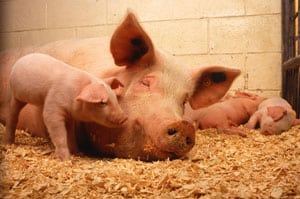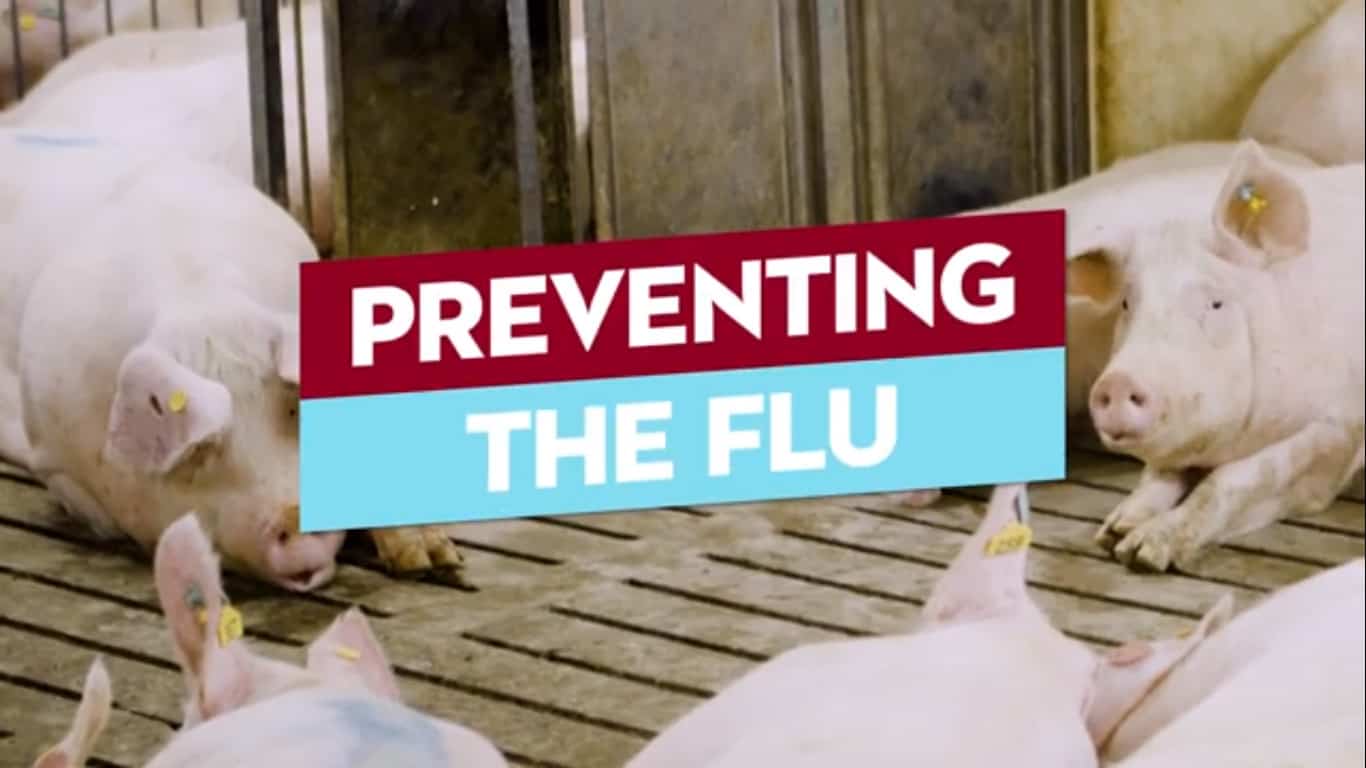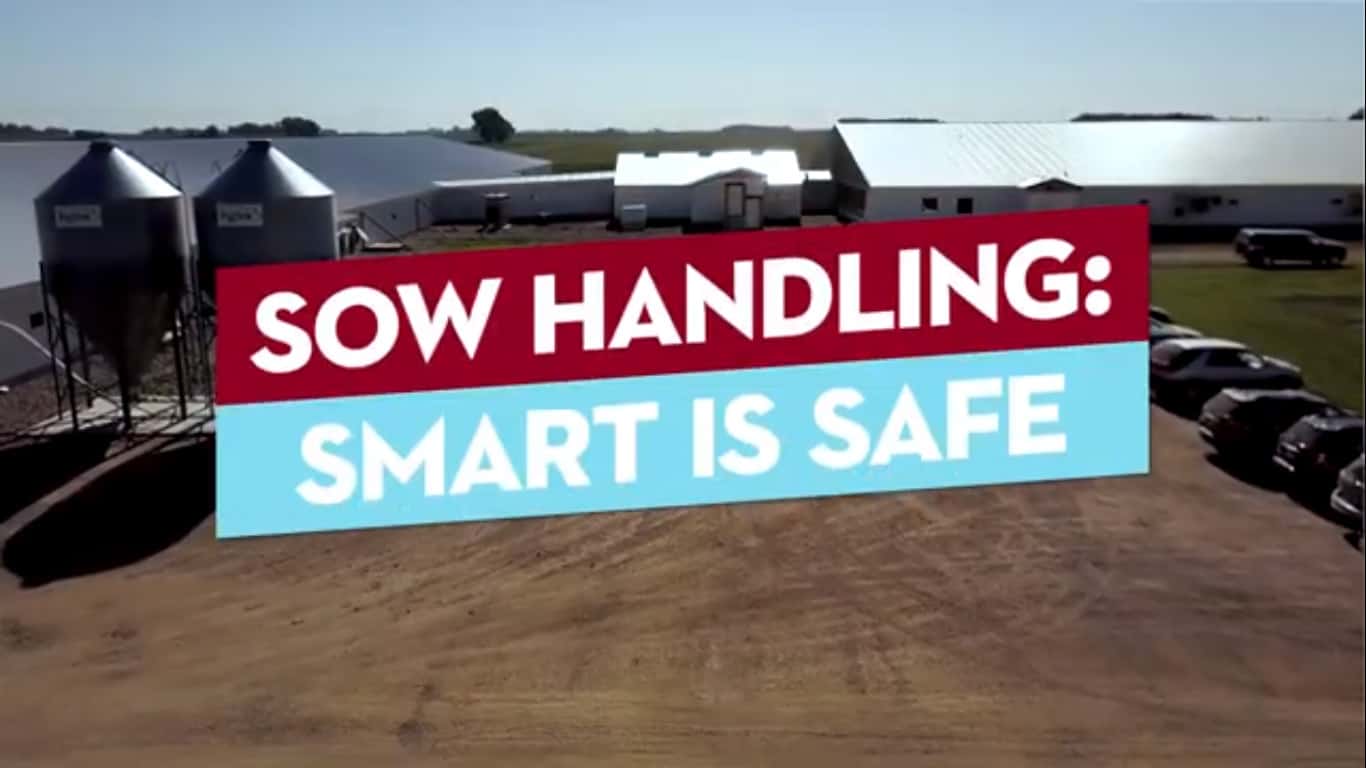
The Upper Midwest is home to swine production. From farrow to finish, producers need to be aware of the risks associated with hog farming and take precautions to avoid illness and injury. UMASH has developed two videos and teaching guides for producers to focus on safety in their operation. These guides are intended for training by farmers, ranchers, …

Protecting Pigs and People from the Flu addresses the transmission of flu from humans to pigs and pigs to humans and the necessary precautionary steps to avoid spreading the virus. Virus transmission is most likely to occur where people and pigs are in close proximity – in swine barns, at exhibitions or fairs, or in slaughterhouses. Receiving a flu …

Moving Sows – Be Safe and Smart demonstrates the best practices for moving sows. Sows can be large and unpredictable animals, so it is important to have a plan and understand animal behavior to avoid injury. This video discusses the basic concepts of using pressure on the flight zone to move animals in the direction you want them to go. Safe handling …
Authors: Choi MJ, Torremorell M, Bender JB, Danila R, Smith KE, Boxrud D, Ertl JR, Yang M, Suwannakarn K, Her D, Nguyen J, Uyeki TM, Levine M, Jhung M, Vetter S, Wong K, Sreevatsan S, Lynfield R Clinical Infectious Diseases. Jul. 29, 2015 ABSTRACT: Live animal markets have been implicated in transmission of influenza A viruses (IAVs) from animals to …
Authors: Murphy D, Engelman S, Raynor PC, Ramachandran G, Alexander BH. Journal of Agromedicine. Minneapolis, Minnesota. June 09, 2014 ABSTRACT: Workers in the swine industry are frequently exposed to respiratory hazards including organic dusts, bioaerosols, gases, and endotoxin. As production practices in the swine industry continue to evolve to meet …
Authors: Beaudoin A, Johnson S, Davies P, Bender J, Gramer M. Zoonoses Public Health. St. Paul, Minnesota. Jul. 18, 2011 ABSTRACT: Influenza A virus infections commonly cause respiratory disease in swine and can be transmitted between people and pigs, with potentially novel strains introduced into herds and spilling back into the human population. …
Authors: Gray GC, Bender JB, Bridges CB, Daly RF, Krueger WS, Male MJ, Heil GL, Friary JA, Derby RB, Cox NJ Emerging Infectious Diseases, 2012 ABSTRACT: Within 5 months after the earliest detection of human influenza A(H1N1)pdm09 virus, we found molecular and culture evidence of the virus in healthy US show pigs. The mixing of humans and pigs at swine …
Authors: Dressler AE, Scheibel RP, Wardyn S, Harper AL, Hanson BM, Kroeger JS, Diekema DJ, Bender JB, Gray GC, Smith TC Veterinary Record, 2012 ABSTRACT: Fairs and petting zoos have been associated with outbreaks of zoonotic disease. Previously, the presence of meticillin-resistant Staphylococcus aureus (MRSA) was documented in commercial pigs; therefore, …
Authors: Fowler HN, Brown P, Rovira A, Shade B, Klammer K, Smith K, Scheftel JM Emerg Infect Dis, 2013 ABSTRACT: Streptococcus suis is a major bacterial pathogen in swine worldwide. Historically, cases in humans have occurred sporadically, mostly in Asia. However, an outbreak in China involved 215 human cases and 39 deaths. Only 3 human cases of S. …

Petting zoos and fairs fact sheet developed by the Minnesota Department of Health. – Are petting zoos and fairs safe? – What are zoonotic diseases? – What are some examples of germs that cause diarrheal zoonotic diseases? – Is it common to find these types of germs at a petting zoo or fair? – How do people get sick from …




